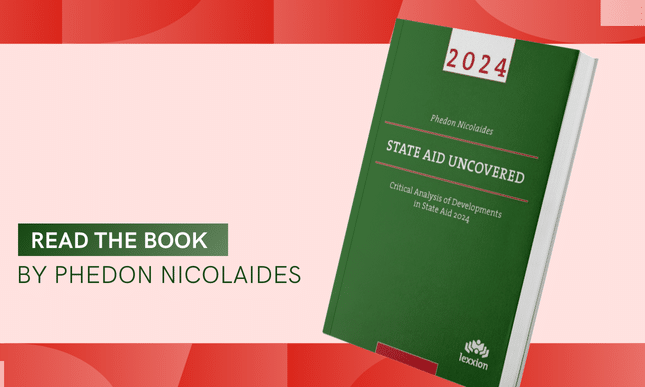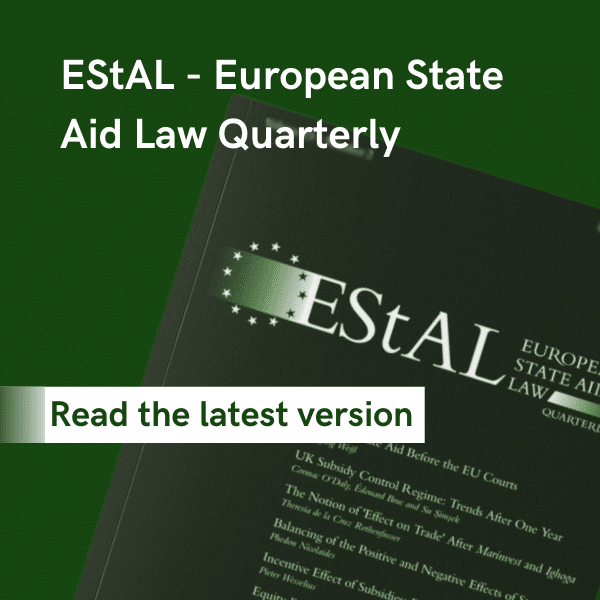
Introduction
Although the Temporary Crisis and Transition Framework [TCTF] expired at the end of 2024, three sections are still valid until 31 December 2025. They are sections 2.5, 2.6 and 2.8. They support the green and digital transition to a more resilient economy.
In this context, Finland notified to the Commission an aid scheme consisting of two measures:
(a) Aid for the decarbonisation of industrial production processes through electrification and/or the switch to the use of renewable hydrogen and for energy efficiency [measure A].
(b) Aid for accelerated investments in sectors strategic for the transition towards a climate-neutral economy [measure B].
As described in the Commission decision SA.113721 approving the scheme,[1] “(5-6) Measure A aims at accelerating strategically significant, high value-added industrial investments contributing towards a climate neutral economy i.e., electrification, the switch to the use of renewable hydrogen or renewable hydrogen-derived fuels and investments for improving the energy efficiency of industrial activities. […] in the absence of the aid, beneficiaries would be likely to continue their activities without changes for a period corresponding to the lifetime of the aided investment. Beneficiaries are not expected to have sufficient financial incentives to invest in decarbonisation or energy efficiency technologies without the aid. […] the existing regulatory framework is not sufficient to achieve the climate objectives. While the European Emissions Trading System (‘EU ETS’) partially addresses the negative externalities of carbon-intensive activities, the Finnish authorities argue that these externalities are not fully reflected in the cost of greenhouse gas (‘GHG’) emissions. In any event, the Finnish authorities explain that they will verify the necessity of State aid and existence of incentive effect based on individual aid applications, as the applicants will submit their business plans and financial projections relating to their project. Only projects for which the necessity and incentive effect of the aid is demonstrated based on the business plan and financial projections will be eligible for aid.”
“(7) As regards Measure B, […], in Finland, the number of investments in strategic sectors for the transition towards a net-zero-economy remains low. This is due to a series of bottlenecks, ranging from inflation, rising interest rates, lack of funding, regulatory uncertainty, and the risk of the investments being diverted in favour of third countries outside the European Economic Area (‘EEA’). […] investments into the battery value chain are particularly at risk of diversion abroad and that the European Union is currently responsible for a small share of global battery raw materials production, and therefore highly relies on imports.”
Finland also confirmed that the scheme would not be open to undertakings under sanctions, nor would it support relocation of productive capacity from other countries in the EEA.
The scheme, with a budget of EUR 400 million, would provide aid in the form of grants. The scheme, with the exception of the usual exclusions [e.g. undertakings in difficulty, undertakings with a pending recovery decision, financial institutions, projects for which work had already started, etc], would be open to undertakings of any size and region.
Specific requirements for measure A
“(21) To be eligible for aid under Measure A, a minimum investment of EUR 30 million of eligible costs is required. Moreover, the investment must enable beneficiaries to achieve either one or both of the following objectives:
(a) reduce by at least 40%, compared to the situation before the aid, direct GHG emissions from their industrial installations currently relying on the use of fossil fuels as their energy source or as feedstock by means of the electrification of their production processes, the switch to the use of renewable hydrogen or renewable hydrogen-derived fuels (‘GHG emissions reducing investments’); and/or
(b) reduce by at least 20%, compared to the situation before the aid, energy consumption in industrial installations in relation to the aided activities (’energy consumption reducing investments’)”.
The reductions would have to go below the legally defined thresholds and the maximum individual aid amount that per undertaking under measure A would not exceed EUR 200 million, taking into account all individual investments and plants owned by the same undertaking.
Also important to note was that the aid aimed at decarbonising the beneficiaries’ production processes or reducing their energy consumption, and not at financing an increase of the beneficiaries’ overall production capacity. For this reason, the aided investment could not result in an increase in the capacity of the beneficiaries’ industrial installations.
Selection criteria
In order to receive aid under measure A, applicants had to satisfy certain selection criteria. “(37) Eligible applications will be assessed against the following selection criteria:
(a) technological and economic feasibility of the investment;
(b) the GHG emission and/or energy consumption reduction resulting from the investment;
(c) cost-effectiveness estimated by the amount of aid divided by the project’s estimated GHG emission reduction and/or total reduction of final energy consumption during the lifetime of the investment;
(d) other positive effects including other environmental impacts, impact on employment and regional economy and scalability of the technology.”
Maximum aid
With respect to the maximum aid intensity “(39) for GHG emissions reducing investments concerning the switch to the use of renewable hydrogen or renewable hydrogen-derived fuels will be 50% of the eligible costs and, for investments aimed at electrification, the aid intensity will be 30% of the eligible costs. For energy consumption reducing investments, the aid intensity will be 30% of the eligible costs.”
The eligible costs under measure A would be “(40) only the investment costs linked to the GHG emissions reducing investment or energy consumption reducing investments, in particular costs of equipment, machinery or installations needed to achieve the electrification, switch to renewable hydrogen or […] or energy efficiency improvements.”
In addition, the following costs would be non-eligible for support:
(a) Wages and overheads.
(b) Travel expenses.
(c) Financing costs [e.g. interest, fees].
(d) VAT.
Instalments and penalties for delay
The aid would be disbursed in instalments, depending on the progress of each project and with penalties for delays. “(44-46) The investment for which aid is awarded under Measure A must be completed and in operation within 36 months after the date of granting the aid. In case of delay, the beneficiaries will be subject to a penalty system under which the aid amount will be reduced by 1% per each month of delay. The penalty system will be triggered as of the first month of delay and apply for as long as the delay lasts, up to a 100% reduction of the aid amount. The penalty will not apply if the beneficiary demonstrates that the delay is due to factors beyond its control and that could not reasonably have been foreseen even if due care was exercised.”
Specific requirements for measure B
The purpose of measure B is to incentivise the production of relevant equipment [e.g. batteries, solar panels, wind turbines, heat-pumps, electrolysers, equipment for carbon capture or storage] or (b) the production of key components which and primarily used as direct input for the production of the relevant equipment.
Eligible costs
Under measure B the eligible costs are “(50) the investment costs in tangible (such as land, buildings, plant, equipment, machinery) and intangible assets (such as patent rights, licences, know-how or other intellectual property) necessary for the production or recovery of the equipment, components and materials linked to the transition towards a net-zero economy listed in recital. Intangible assets must: 1) remain associated with the area concerned and must not be transferred to other areas; 2) be used primarily in the relevant production facility receiving the aid; 3) they must be amortisable; 4) be purchased under market conditions from third parties unrelated to the buyer; 5) be included in the assets of the undertaking that receives the aid; and 6) must remain associated with the project for which the aid is awarded for at least five years.”
Amount of aid
“(51) The grant shall not exceed 15% of the eligible costs and the overall aid amount may not exceed EUR 150 million per undertaking in Finland.” For investments in Finland’s assisted regions, a bonus of up to 20% could be added with a maximum ceiling of EUR 200 million per undertaking. In addition, “(52) beneficiaries must undertake to keep the investment in the area concerned for at least five years, after the completion of the investment.”
Compatibility assessment
The Commission assessed the two measures on the basis of Article 107(3)(c) TFEU, in light of section 1, section 2.6 in relation to measure A and section 2.8 in relation to measure B of the TCTF.
Since Finland notified the two measures as an aid scheme, the Commission concluded quickly that the scheme fell within the scope of Article 107(1) TFEU and proceeded to determine its compliance with the conditions laid down in the TCTF.
Measure A
Measure A was assessed according to the criteria in section 2.6 of the TCTF. “(74) The Commission considers that Measure A is necessary, appropriate and proportionate to reduce dependence on imported fuels and accelerate electrification in the current context and can be declared compatible with the internal market on the basis of Article 107(3), point (c), TFEU for the reasons set out in recitals (75) to (97).”
Since point 81 of the TCTF allows aid for investments leading to reduction of GHG emissions, measure A did comply with that point and with all the specific conditions laid down therein.
Measure B
Given that measure B aimed at investment projects with strategic importance for the transition towards a net-zero economy, it was assessed according to the criteria in section 2.8 of the TCTF.
In particular, the Commission found that it complied with all of the specific conditions in point 85 of the TCTF.
For both measures, the Commission concluded that they did not violate any other provision of EU law and with points 51 and 52 of the TCTF [no aid to relocation and no aid to sanctioned undertakings, respectively].
Since the two measures conformed with all of the relevant requirements of the TCTF, the Commission authorised the Finnish scheme.
[1] The full text of the Commission decision can be accessed at:
https://ec.europa.eu/competition/state_aid/cases1/20256/SA_113721_107.pdf



